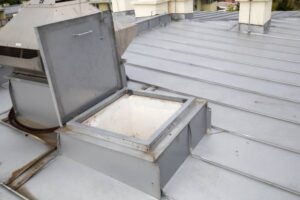Acoustic guitars produce sound through string vibration, with either nylon or steel strings playing for optimal results.
Sitka Spruce, Mahogany, Rosewood, Maple and Cedar are acoustic guitars’ most frequently used woods. Each type of wood affects both tone and durability of an instrument as well as price variations.
Soundboard
The soundboard of an acoustic guitar plays a pivotal role in its tone and projection quality. In meeting these criteria, it must be flexible enough to vibrate with each string plucked while remaining rigid enough to support its vibrations over time. It features braces and struts interlaced throughout its surface area to accomplish this task.
 The wood used for soundboard construction can enormously impact the tone and projection of an instrument. Tonewood comes from two species of trees: conifers (spruce) and deciduous trees such as oak which shed their leaves each season.
The wood used for soundboard construction can enormously impact the tone and projection of an instrument. Tonewood comes from two species of trees: conifers (spruce) and deciduous trees such as oak which shed their leaves each season.
Studio1-Vintage acoustic guitar offers crisp highs with impressive projection, while cedar offers warmer tones that are more mellow. Adirondack spruce, named for the region in which it grows, is popular among many builders due to its outstanding strength-to-weight ratio and vibrant ruddy colouring, giving instruments an upbeat and lively tone. Other popular wood choices for building guitars include mahogany, rosewood and koa.
Body
An acoustic guitar’s body is composed of wood and comprises its soundboard, bridge and saddle – these three parts allow vibrations from its steel strings to mechanically connect with air-borne molecules and add to its overall sound.
Typically, deeper bodies produce deeper bass notes with increased resonance, while shallower guitar bodies provide a more focused tonal balance between treble and bass frequencies. Yet even within these categories are numerous guitar body shapes and sizes, which can dramatically change both tone and feel of an instrument.
Parlour-shaped guitars are an example of this. Smaller than dreadnoughts but larger than concert guitars, these instruments feature tighter waists to reduce surface area, thus increasing treble response and thus producing a richer, fuller acoustic sound with powerful bass tones, balanced midrange frequencies and an articulate high-end response; perfect for fingerstyle playing!
Neck
The neck is the long piece of wood connecting the body of a guitar to its fretboard, the board with frets that enable players to play different notes on an instrument. It may be constructed using various types of wood with different tonal and playing characteristics, and will impact its tone and playability.
Studio1-Vintage acoustic guitar come in all sorts of shapes that determine how easy or difficult they are to play and what style of music will result from using one. A C-shaped neck typically offers easy playing conditions by cupping the fingers easily; V-shaped necks, often seen on older or reproduced guitars with pointed apexes, may be preferable for players with larger hands and thumbs that tend to hang off the side or back of their guitar necks.
Dovetail joints connect the neck to the body via trapezoidal cuts on both wood parts, creating an ideal tight fit, perfect for transmitting sound. They’re usually made of mahogany or similar dense wood to reduce any risk of warping over time.
Fretboard
The fretboard is typically composed of hard wood like rosewood or ebony and covered in either oil or finish for easier finger movements along the strings. It contains steel frets at regular intervals called frets which divide the playable length into note intervals; furthermore, it features inlays (often displayed as dots) to assist you with quickly finding notes on the fretboard.
When playing any string open and then again at its 12th fret, a distinct sound will emerge – one where the 12th fret note is an octave higher than when played open. This pattern repeats itself all along the fretboard.
Memorizing the fretboard is easiest when you recognize its repeating patterns. Once you learn that A is located at the fifth fret, using this knowledge, you can quickly recall other notes on that string, two strings up and three frets to the right, more quickly than trying to memorize each note individually.
Pickguard
The pickguard or scratchplate protects the top of a guitar from scratches caused by a guitar pick. Studio1-Vintage acoustic guitar typically consists of some sort of plastic material; however, metal and other materials may also be used as scratchplates. Furthermore, pickguards come in various shapes and sizes, making an integral part of many guitar’s aesthetic designs.
 Most zoning laws allow for some overlap among different land uses; for instance, some districts permit multifamily and single-family residential buildings, while others may enforce specific building density and height regulations to balance aesthetic, functional, and safety considerations.
Most zoning laws allow for some overlap among different land uses; for instance, some districts permit multifamily and single-family residential buildings, while others may enforce specific building density and height regulations to balance aesthetic, functional, and safety considerations. Whether you’re looking to refresh your home’s interior or add value, house painters in Auckland can do both. Make sure you supply your paint (leading brands such as Resene and DULUX cost more), and remove all wallpaper before the painters arrive.
Whether you’re looking to refresh your home’s interior or add value, house painters in Auckland can do both. Make sure you supply your paint (leading brands such as Resene and DULUX cost more), and remove all wallpaper before the painters arrive. Roof hatches may present a fall hazard when left open, but this can be avoided by installing protective railings around their opening. There are various kinds of roof hatches designed to meet specific needs.
Roof hatches may present a fall hazard when left open, but this can be avoided by installing protective railings around their opening. There are various kinds of roof hatches designed to meet specific needs.